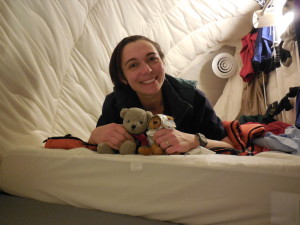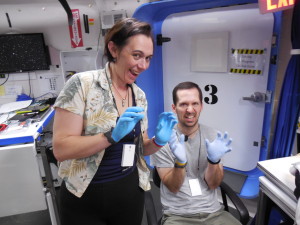 Imagine if the pioneers who eventually settled what are now the central and western states of the US could have PRACTICED before heading off in their covered wagons. How would that have changed what they packed? Who they brought along? Or whether they would have gone at all (and would we ever been able to chuckle at death by dysentary on Oregon Trail)?
Imagine if the pioneers who eventually settled what are now the central and western states of the US could have PRACTICED before heading off in their covered wagons. How would that have changed what they packed? Who they brought along? Or whether they would have gone at all (and would we ever been able to chuckle at death by dysentary on Oregon Trail)?
In this day and age of luxuries, one of the ultimate luxuries that we may have – right up there with antiseptics, vaccines, and the internet – is VIRTUAL reality. I don’t mean the kind with goggles, though that’s pretty awesome, too. I am referring to our ability to project our will into a non-tangible space and then manipulate it in order to predict outcomes. To MODEL life before living it: that’s an incredible privilege; a boon to modern man that allows us to engineer bigger and better buildings, make better choices about agriculture and industry, and yes, go to space SMARTER.
Thanks to modeling in virtual spaces, we are generating (and over-generating) green energy, hanging out in floating hotels, and making practice runs to Mars and nearby asteroids. These mission analogs, as they are called, are models, just like models of buildings, only they include many of the things that we need to know before we go. How much food do six fit astronaut-types eat in a year? And what do they eat? How much water do they use? Can they stay in shape, locked in a 1700 square foot dome, with only occasional walks outside in bulky suits? Are they bored? No really – boredom is a problem in space, as it is everywhere else there are people and time.
These analog missions are the practice runs in modern covered wagons before we set out into the next frontier. After HERA (Human Exploration Research Analog), which I went on in April with 3 other crewpeople, we’ll know more about how the crew do during long-distance trips to asteroid. After HI SEAS, which I’m headed out on in late August, we’ll know a LOT more about missions to Mars: what we need to make it for a year in a dome. This is going to be the longest study we’ve done. The crew are veterans of analog missions. We’ve done HERA and MDRS, the Mars Desert Research Station mission. We know that we can do this, and we know that we need to do it for the future of human space travel. As you can see, we’re very, VERY serious about our science.
